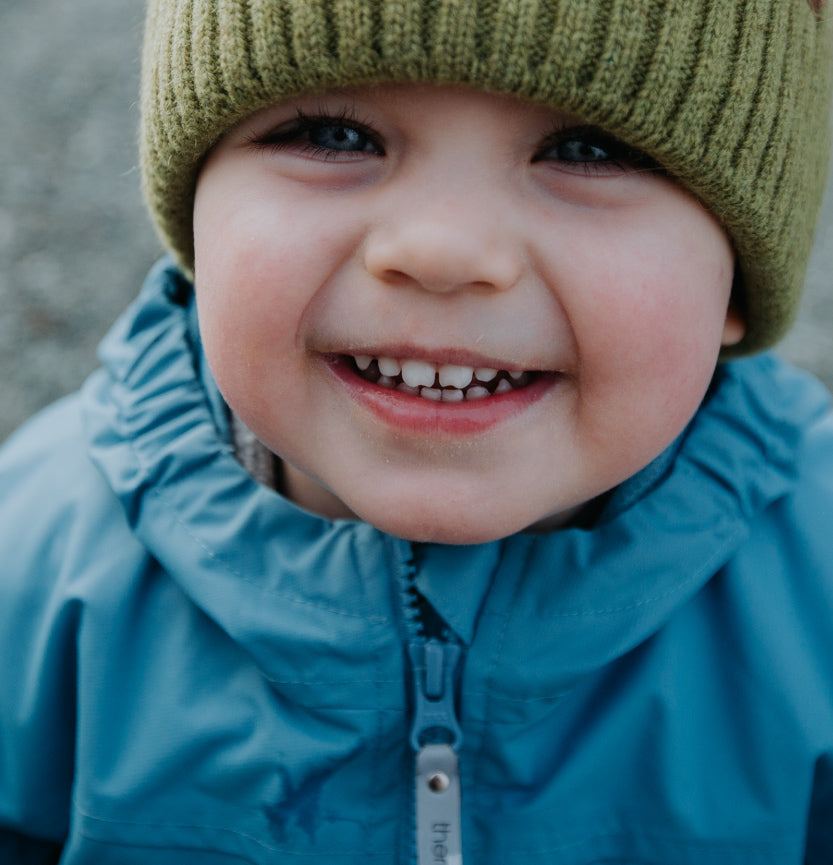Tips on Dressing Your Kids for the Mountain

If there is one thing we love the MOST here at Therm HQ it is letting loose on the mountain! We know the key to a great day is dressing for the conditions... it's a fast track to misery town if you are cold and shivery, or even too hot and sweaty (not to mention smelly!). Keep your groms happy and skiing all day long with our guide below!
Rule #1: Keep Them Warm and Dry
Never underestimate the weather. A beautiful sunny day can turn nasty in no time on the big white hill. The beauty of skiing is that you're usually close to a lodge—but with a beginner skier, getting down the mountain can take time.
There is such a huge range of gear available these days it can be so confusing! Not to mention changes in weather, and your child's ability and attitude will also affect their body temperature - if they aren't having a good time they won't want to move, and that can mean a fun family day can turn sour very quickly. Here are some tips on how to layer up and have a great day on the hill.
Jacket:
The goal is to be warm when riding up the chairlift, but not sweaty while skiing down. Make sure it zips right up to the chin, and has room to also wear a scarf or neck gaiter if it is really chilly.
For weight, this can really differ depending on the individual and the conditions. Some people like to wear a thin outer shell with layers underneath, others a heavier insulated jacket works better. Either way it must be a good waterproof rating to avoid getting damp and cold. Layering is a great option for kids, as you are able to easily regulate the temperature if they are too hot – plus you have more options depending on the conditions.
Waterproof ratings: A waterproof garment is measured in millimetres. You will see numbers from 2,000mm up to 9,000mm plus across our collection to describe how dry the garment will keep you. But what does it mean? For example, if a jacket were 5,000mm waterproof, a test is conducted where a long tube is placed over the fabric and the tube is then filled with water. 5,000mm or 5 metres (16.4 ft) is how far you could fill the tube before it would start to leak through the fabric. So in theory, you could stand out in the rain until 5,000mm of rain fell before you would start getting wet. More information here.
A jacket should be hit below the hip to prevent snow from getting in at the waist, and a longer length at the back is always good to prevent drafts and gaps when bending over or sitting down. Look for additional pockets for passes, snacks etc.
Therm Snowrider Jacket: 9,200mm waterproof with light insulation and fleece lining. Stash pockets, hand pockets, and pass pockets. Adjustable cuffs with built in handwarmers.
Pants: These should be insulated and waterproof. Ski pants usually have interior ankle gaiters that keep snow from getting into ski boots. High-waist or bib-style pants with detachable straps are the best choice for children, as they keep the pants from falling down, plus the bib provides added protection when the snow sneaks inside.
Therm Snowrider Pants: 9,200mm waterproof with insulation. Detachable bib and straps, reinforced knees & bum, elasticated ankle gaiters.
Base Layers: Merino wool is always best, and luckily there are a lot of options here in New Zealand! The high end brands are excellent – but inexpensive options work well too (just watch the scratchiness). Merino is the best fibre to have against the skin for heat, sweat, and smell regulation. Make sure the fit is snug, but not too restrictive.
Balaclava: No need to go full bank robber style here! However it is really important to have something around the neck, that can also wrap around the chin and cheeks if it is windy. A polar fleece tube scarf is very versatile. The ones with the airhole are great so you can pull them up right over your mouth and still keep the condensation from your breath out.
Socks: Ski socks should always be knee length, again ideally wool content, and be quite thick to provide padding against the boots. Kids should have 2 pairs of ski socks but wear only 1 pair at a time. Rotate the pairs to prevent blisters; keep the extra one in your bag/pocket in case of wet feet.
Mitts: Mitts are better than gloves for warmth as they trap the air and warmth in around the hand rather than separating the fingers. Look for a waterproof, well-insulated pair. Wrist cuffs should be long enough to either extend under or over jacket cuffs. A good idea is to wear a light glove liner inside, so if little hands do need to come out of the mitts while outside then they are still protected.

Helmet: The helmet should be snug enough to be firmly on the head without having to tighten the strap uncomfortably. If it is wiggly or falling down over the eyes then it is too big! Ensure the helmet has ear covers, this will keep your child's head warm, and also help with helmet stability.
Googles: Make sure these are comfy around the eyes, and the lenses are the most important here - blue or yellow tone is best in cloud or low light, amber/brown tones are good for bright sun.
That’s a lot to pack! It is always good to make a checklist – which can also be made into a fun game for your kids to ensure nothing is left behind.
Rule #2: Have Fun!!
Check out our next article with tips on introducing your kids to skiiing!










